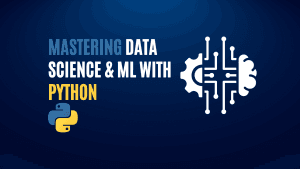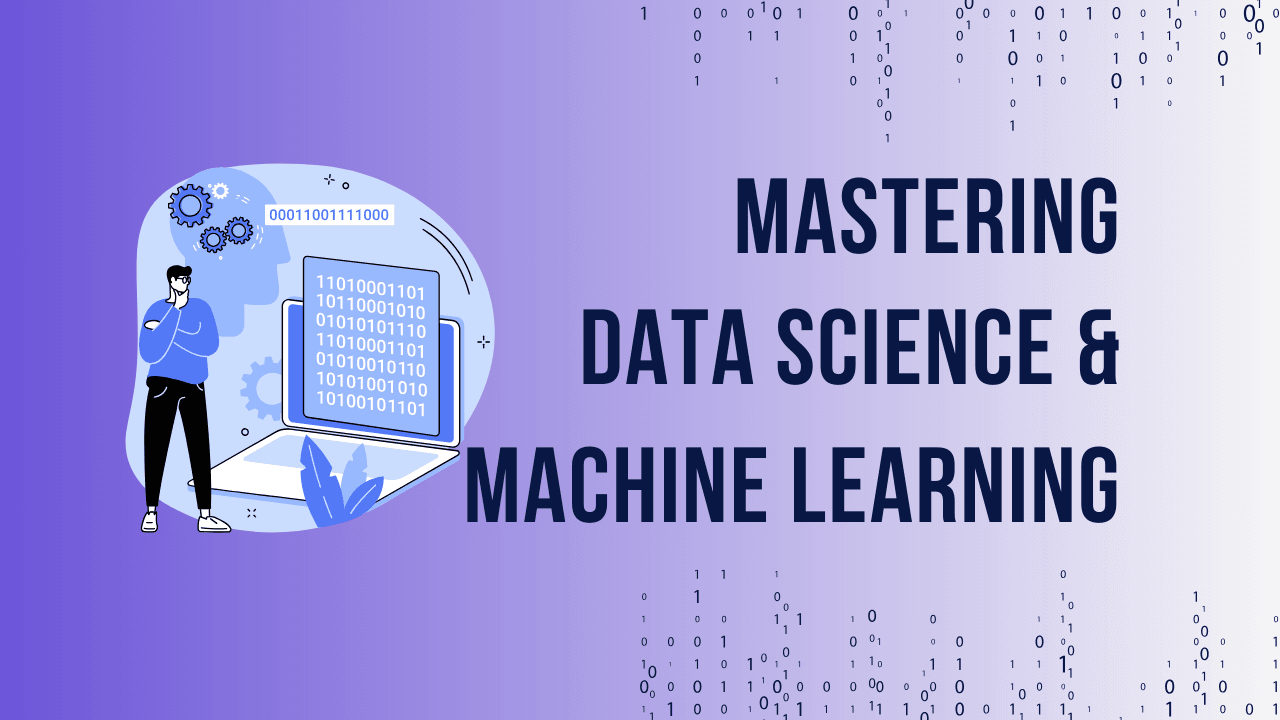Table of Contents
Toggle1. Introduction: Understanding Data Science
Data Science is one of the most exciting and fast-growing fields today. As the world becomes increasingly data-driven, understanding how to analyze and interpret data has become an essential skill across industries. But what does it take to become a data scientist? How do you prepare yourself for a career in this field? This article will explore the core skills, tools, and learning paths you can follow to become a data scientist, even if you’re learning on your own.
Ready to take you Data Science and Machine Learning skills to the next level? Check out our comprehensive Mastering Data Science and ML with Python course.
2. The Core Skills of a Data Scientist
Mathematical Skills
To understand data, a good grasp of mathematics is essential. This includes topics such as calculus, linear algebra, and probability, all of which are necessary to build models and interpret data accurately.
Statistical Knowledge
Statistics are at the heart of data science. It’s important to understand how to work with statistical models, probability distributions, and hypothesis testing to extract meaningful insights from data.
Analytical Thinking
Beyond technical skills, data scientists must develop sharp analytical thinking. This includes the ability to ask the right questions, identify patterns, and draw conclusions from complex datasets.
Ready to take you Data Science and Machine Learning skills to the next level? Check out our comprehensive Mastering Data Science and ML with Python course.
3. Learning Programming Languages
Coding is a fundamental skill in data science, and knowing the right languages can make all the difference.
Python for Data Science
Python is the most widely used language in the field due to its simplicity and versatility. Learning libraries like Pandas, NumPy, and Scikit-learn will be critical to your success.
R for Data Science
While Python is dominant, R is also widely used, especially in academia. It’s particularly strong for statistical analysis.
SQL for Data Queries
Data scientists often work with large datasets stored in databases. SQL is essential for retrieving and manipulating this data efficiently.
Ready to take you Data Science and Machine Learning skills to the next level? Check out our comprehensive Mastering Data Science and ML with Python course.
4. Understanding Machine Learning
Machine learning (ML) is one of the core components of data science. It’s the study of algorithms that allow computers to learn from and make predictions based on data.
Basics of Machine Learning
It’s important to start by understanding what machine learning is, how it works, and its various types, such as supervised, unsupervised, and reinforcement learning.
Popular Machine Learning Algorithms
Familiarizing yourself with algorithms like decision trees, random forests, support vector machines, and neural networks will allow you to handle a wide range of data science problems.
5. Data Manipulation and Cleaning
Data manipulation is about transforming raw data into a usable format, and data cleaning ensures accuracy. These two steps are crucial in the workflow of any data scientist.
The Importance of Clean Data
Without clean, well-structured data, even the most advanced models will produce inaccurate results. Learning how to clean and preprocess data is a vital skill.
Tools for Data Cleaning
Tools like Python’s Pandas and NumPy are invaluable when it comes to cleaning data. Practice handling missing values, outliers, and inconsistent data formats.
Ready to take you Data Science and Machine Learning skills to the next level? Check out our comprehensive Mastering Data Science and ML with Python course.
5. Data Manipulation and Cleaning
Data manipulation is about transforming raw data into a usable format, and data cleaning ensures accuracy. These two steps are crucial in the workflow of any data scientist.
The Importance of Clean Data
Without clean, well-structured data, even the most advanced models will produce inaccurate results. Learning how to clean and preprocess data is a vital skill.
Tools for Data Cleaning
Tools like Python’s Pandas and NumPy are invaluable when it comes to cleaning data. Practice handling missing values, outliers, and inconsistent data formats.
6. Data Visualization
Visualizing data helps make complex information easier to understand and communicate.
Why Visualization is Key
Data visualization allows you to tell a story with your data. Charts and graphs can make insights clear and understandable to non-technical stakeholders.
Tools to Learn
Familiarize yourself with tools like Matplotlib and Seaborn for Python, as well as Power BI and Tableau for business-oriented data visualizations.
7. Building Projects for Practical Experience
Hands-on experience is one of the best ways to solidify your data science knowledge. Working on projects helps you apply what you’ve learned and build a portfolio that can impress future employers.
Example Projects to Build
- Predictive models (e.g., predicting stock prices, customer churn)
- Exploratory data analysis (e.g., analyzing public datasets)
- Creating dashboards (e.g., building interactive dashboards for visualizing data trends)
8. Developing Problem-Solving Skills
Data scientists are often tasked with solving complex, real-world problems. Strong problem-solving skills are crucial to identifying the right approach to a given challenge.
Steps in the Problem-Solving Process
From defining the problem and gathering data to analyzing results and presenting conclusions, each step requires careful thought and attention to detail.
9. Learning Big Data Tools
Big data is an essential part of modern data science. Knowing how to work with huge datasets and the tools used to process them is crucial.
Introduction to Big Data
Big data refers to datasets that are too large and complex to be processed using traditional methods. Understanding the basics of big data and how it is stored and analyzed is key.
Tools to Learn
Familiarize yourself with tools like Hadoop, Spark, and Kafka, which are used to manage and analyze big data.
10. Understanding Cloud Platforms
Many data science projects are run on cloud platforms due to their scalability and computational power.
Why Cloud Computing Matters
Learning to use cloud platforms is important for storing and processing data, especially when working with big datasets.
Popular Cloud Platforms
Some common cloud platforms used in data science include AWS, Google Cloud, and Microsoft Azure. Each has a range of tools and services tailored to data science projects.



